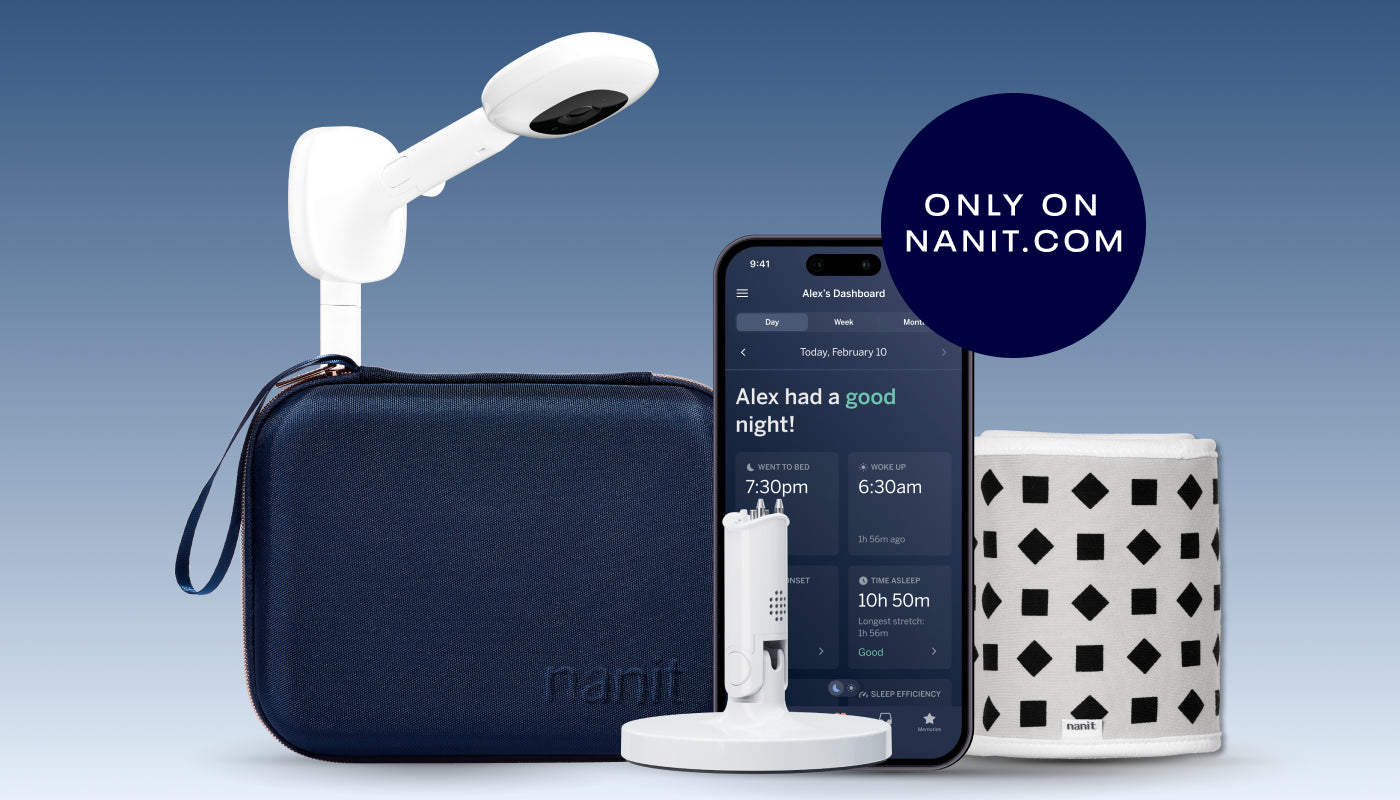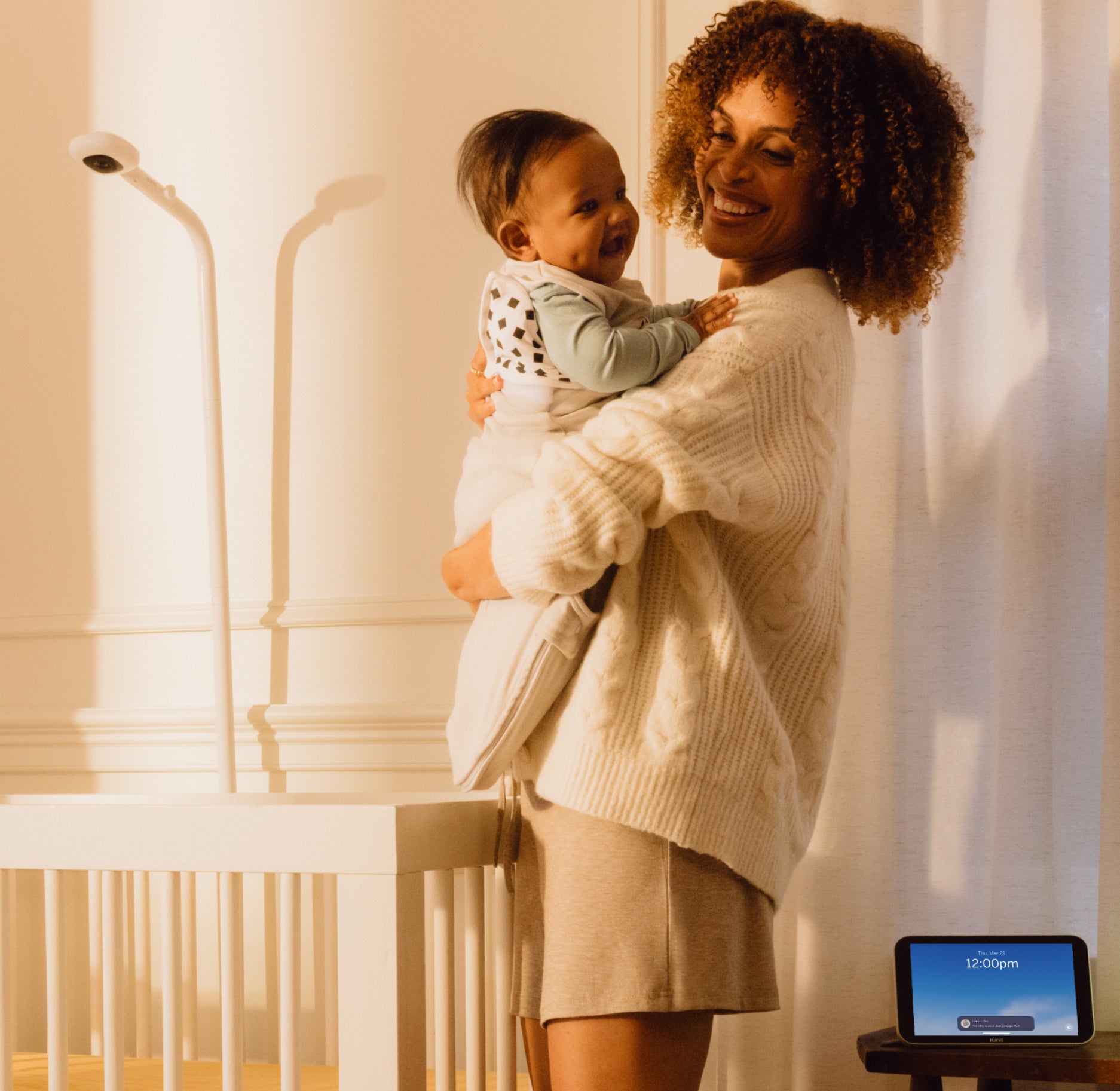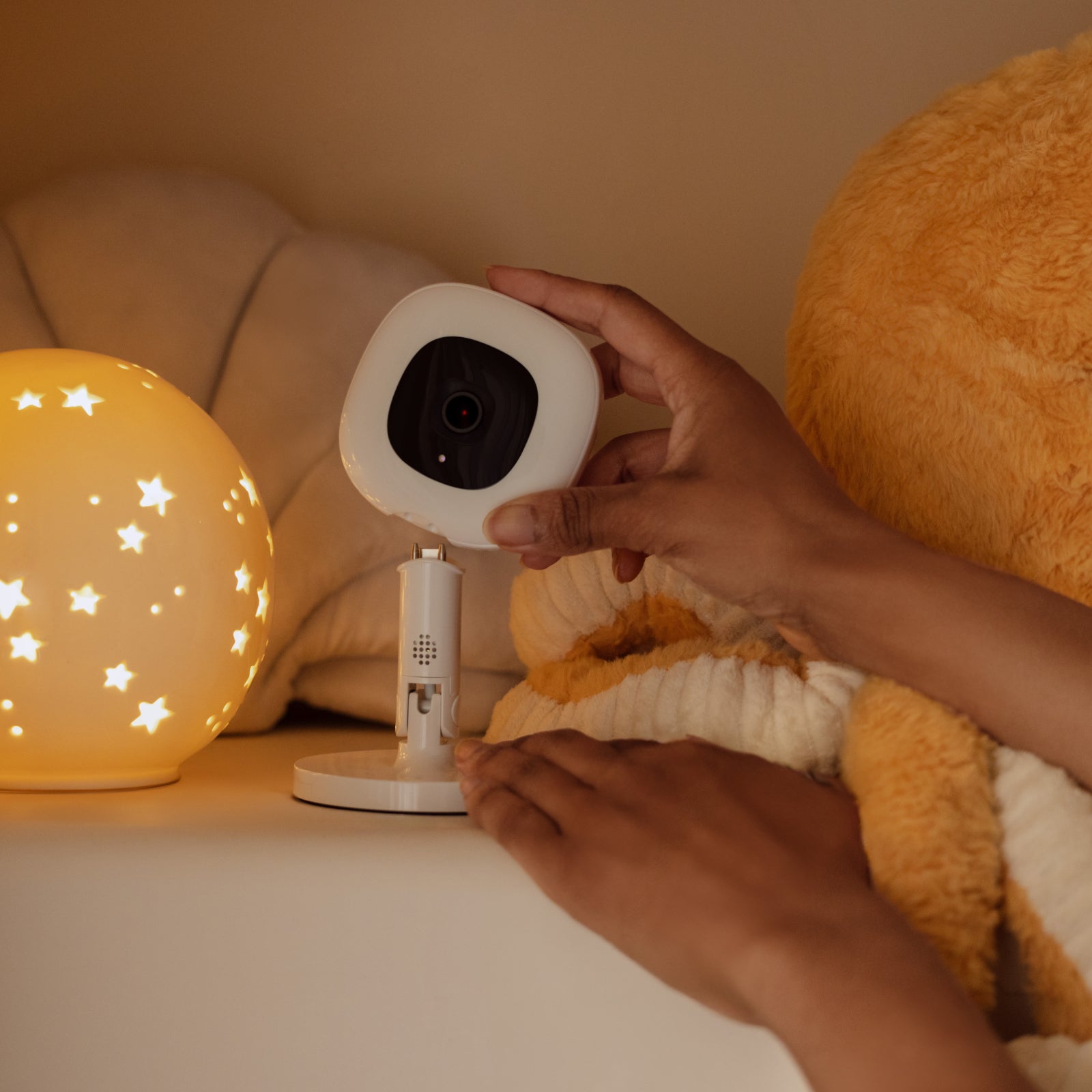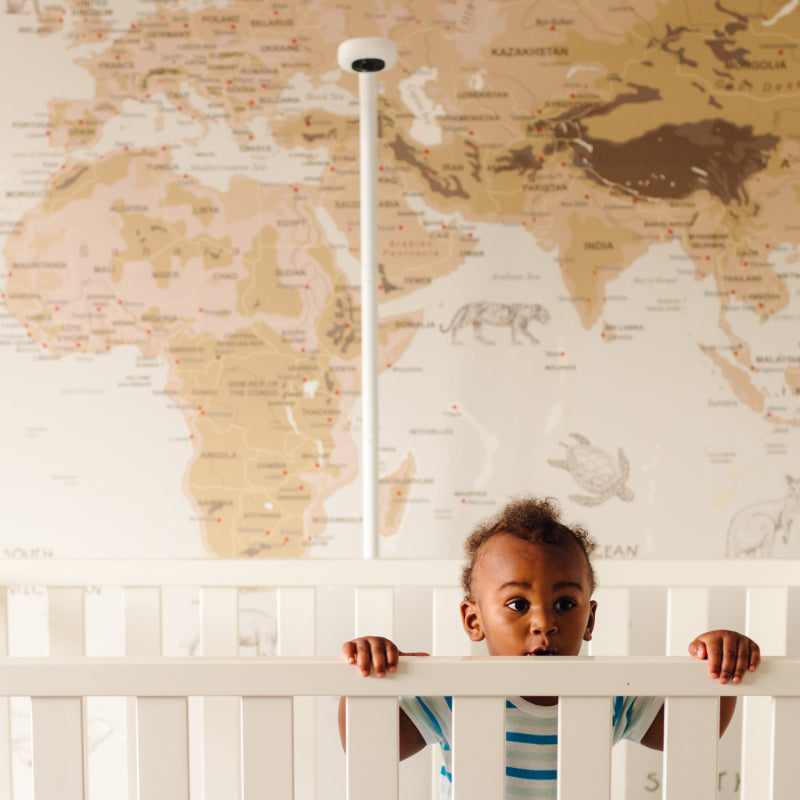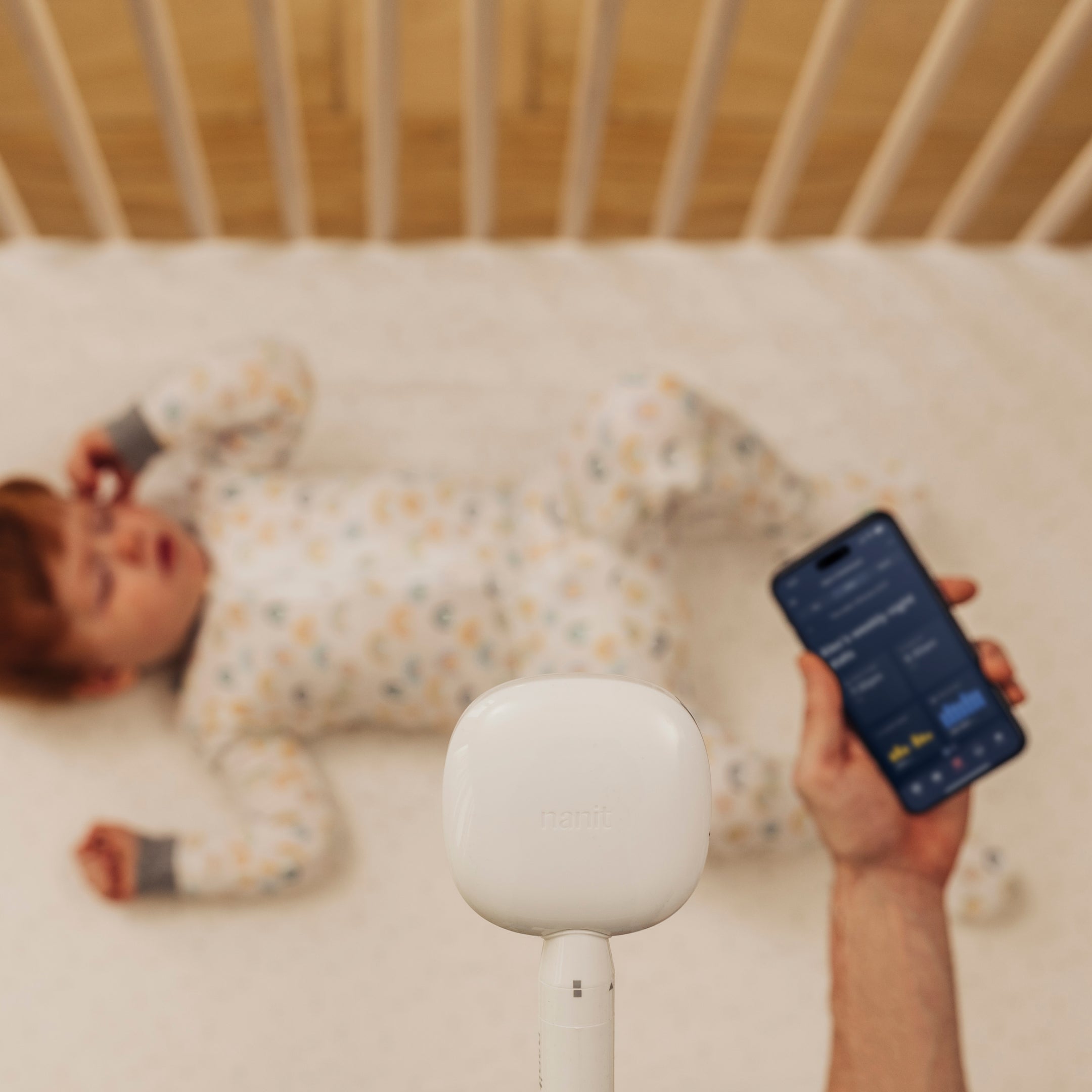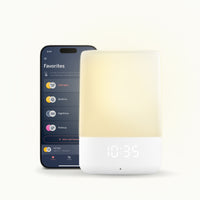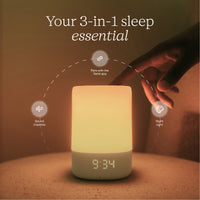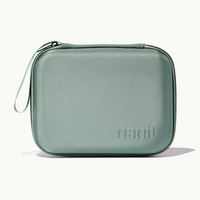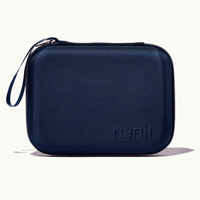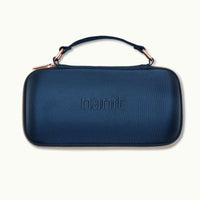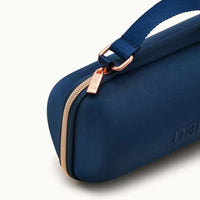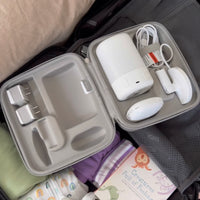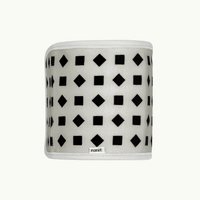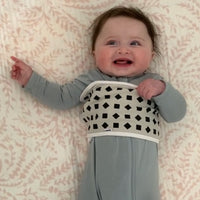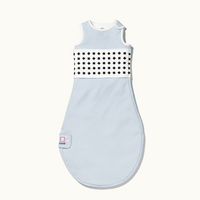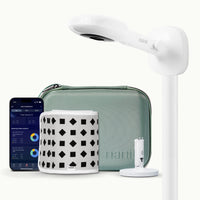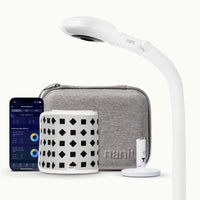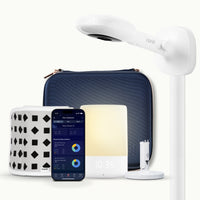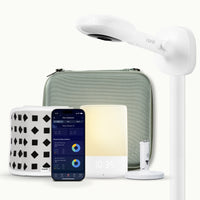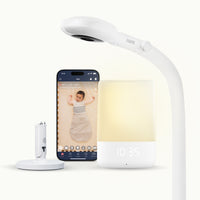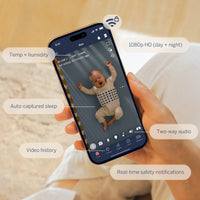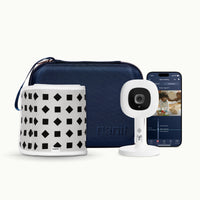Melissa Horger, Maristella Lucchini, Natalie Barnett
Presented at Sleep and Breathing 2025
Introduction:
Infant breathing rate (BR) is a critical health indicator and changes in a sleep
dependent manner. Several methods have been designed to measure BR, from manual chest movement monitoring, to acceleration or piezoelectric sensors. However, existing solutions are often invasive. Nanit developed a sensorless BR monitoring solution (US Patent 10874332), utilizing a high contrast garment (Breathing Band (BB)) and a camera mounted above the crib with an infrared illumination source. A real time computer vision algorithm tracks movement of the geometric pattern printed on the BB, fitted snugly around the infant’s torso. Here we present validation results on the performance of this algorithm against a validated ground truth device (GT) to accurately measure minute by minute BR.
Methods:
We recruited 38 infants (mean age 8.96±5.93 months) to take a nap in a sleep
laboratory. During each nap study, a cardiorespiratory sensor (GT) was placed on the baby's chest before putting on the BB and putting them to sleep in a crib at their usual nap time. Each study utilized 3 Nanit cameras to assess the impact of different camera heights and angles. The success criteria was defined as a BR agreement of ±4 breaths per minute (BPM) to the GT device values. 5 experiments were excluded due to failure collecting either GT or Nanit data, or data outside of physiological ranges.
Results:
The overall agreement was 92%. The mean absolute error was 1.70 BPM. There were
no significant differences between the performances of the different camera setups.
Discussion This is a promising, non-invasive solution for monitoring respiration in infants. This has clear applications to health monitoring but also to develop automated sleep staging algorithms.
Minute by minute BR values for GT (green), 3 Nanit cameras (blue, purple and red) for one participant.
|
Agreement rate [%] |
Mean absolute difference between Nanit algorithm and GT (BPM) |
Mean difference between Nanit algorithm and GT (BPM) |
Difference Standard Deviation between Nanit algorithm and GT (BPM) |
Average length in minutes per session |
Average number of invalid minutes per session |
|
92% |
1.7 |
-0.93 |
2.26 |
50.32 |
9.95 |
About the Researchers
The researchers included Melissa Horger, Maristella Lucchini, Natalie Barnett
- Dr. Maristella Lucchini serves as Senior Clinical Researcher at Nanit. In her role, Maristella works to secure grant funding in collaboration with Nanit’s university research partners and supports the development of the company’s research collaborations around the world. Previously, Maristella served as an Assistant Research Scientist in the Division of Developmental Neuroscience, Department of Psychiatry at Columbia University Irving Medical Center where she led projects across several cohorts focusing on sleep health for pregnant and postpartum women and their children. Maristella’s research focused on underserved communities and sleep health disparities in the perinatal period. During her years as a postdoctoral researcher at Columbia University Irving Medical Center in the Department of Psychiatry, Maristella was selected to participate in the American Academy of Sleep Medicine Young Investigator Research Forum. She holds a Ph.D. in Biomedical Engineering from Politecnico di Milano.
- Dr. Natalie Barnett serves as VP of Clinical Research at Nanit. Natalie initiated sleep research collaborations at Nanit and in her current role, Natalie oversees collaborations with researchers at hospitals and universities around the world who use the Nanit camera to better understand pediatric sleep and leads the internal sleep and development research programs at Nanit. Natalie holds a Ph.D. in Genetics from the University of New England in Australia and a Postgraduate Certificate in Pediatric Sleep Science from the University of Western Australia. Natalie was an Assistant Professor in the Neurogenetics Unit at NYU School of Medicine prior to joining Nanit. Natalie is also the voice of Nanit's science-backed, personalized sleep tips delivered to users throughout their baby's first few years.


